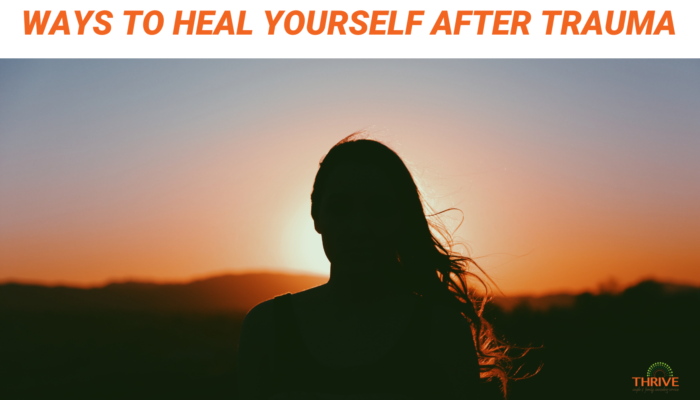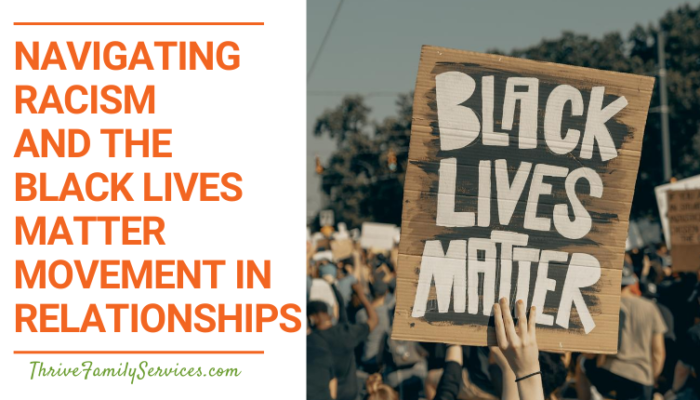One way to define trauma is an overwhelming experience that exceeds our ability to cope, coupled with an experience of aloneness. As trauma informed therapists, one of the common themes present in people’s description of traumatic experiences is that they were alone when they faced this trauma.
That aloneness is either physical (no one was there to help me), or emotional (no one stopped it, no one believed me).
Given this painful experience of aloneness, a person healing from trauma often needs an “un-doing” of this aloneness. Therapy can help with the un-doing of aloneness. This can take the form of individual therapy, family therapy to help others see the ways in which they left the person alone, or in a repair experience with a current romantic partner.
Current romantic partners can provide a level of safety and responding to the traumatic experiences in the here and now in a way that transforms the way a person experiences the trauma back then.
In addition, there are many ways a person can un-do aloneness with themselves. These set of tools are ways of being mindful and responding to calm the body whenever a trauma echo visits a person.
These individualized treatments can include EMDR, or Eye Movement Desensitization and Reprocessing. You can read more about that here.
Keep reading for some other helpful individualized tools:
RAPID AND EFFECTIVE WAYS TO CALM FROM TRAUMA
Gil Shepard MFT
The following are ways that use the physical body to center. They usually work very quickly, even when in a flashback. These methods use the body to help you focus in a way that feels natural, using the principle of focusing your mind on your body. This neutralizes your emotions and body, mind and emotions naturally balance.
Please try all these methods as different people find some are more effective for them than others. Because you may not be able to think of any of these when you are overwhelmed you may find it helpful to write a very brief list of these on a small piece of paper and put this list in your wallet or purse.
FOR ALMOST ANY AWFUL FEELING INCLUDING PANIC, ANXIETY, AND FEAR
Rub your feet back and forth (bare or with socks) on a carpeted floor. The friction on the soles of your feet will help you focus your mind on your feet instead of whatever thoughts or feelings you may be overwhelmed by. That balances mind, body and emotions, usually within 20 to 30 seconds. No equipment needed – you carry your feet with you! You can do this anywhere, in your car or a seat in a shopping mall, even at work. This is very effective for calming and centering.
CURLING INTO A BALL FOR FEAR, LOSS OR OVERWHELM
Loss tends to hit you in the gut and/or in the heart. When suddenly frightened you may find you automatically curl up in a protective position. Curling up is your body’s automatic way to protect the most vulnerable parts of your body. The following exercise simply goes with the way you naturally feel at those times.
Sit on the floor and pull your knees up to your chest. Let yourself experience how protective this feels. Continue to curl even more tightly into a ball by putting your arms around your knees to pull your knees tightly together and against your chest. Bend your head toward your knees. You will feel protected and safe with the bony parts of your body on the outside.
Holding tightly releases tension held in your muscles and you want to release all the tension you can, so hold as long as you can. When you can’t hold any more, gradually relax and just sit quietly for a few minutes. This can leave you calm and centered. In this state whatever is ready to be released will release. You may have relaxing tears, inner knowing, or a delightful calmness.
If you can’t curl up in this position because of a bad back or weight you can cross your legs and curl up the best you can, again squeezing yourself as tightly as you can to get somewhat the same experience.
FOR FEELING SHAKY
When you feel shaky it is often because when you were traumatized you could not move for whatever reason. Your body then held in your desire to run or fight and your muscles now are stuck holding in that urge to move so they shake. A long time ago freezing helped you survive. That time is no longer here so you can release your muscles safely.
Simply stand and begin by shaking your hands, arms and gradually include the rest of your body and your head. Let your body shake the way it likes to and as long as it wants to. Continue until you come naturally to a stop. Experience the anxiety shaking off your body. Let yourself shake as vigorously as you want to.
RIP PAPER – FOR ANGER
Here is a technique I learned from a teenager. He came to my office on a first visit and asked for a piece of paper, which I gave him. Concentrating intently he slowly and deliberately ripped it in half, put those two pieces together and ripped them in half. He continued until the paper was in tiny pieces. Then he said, “Now I feel better.”
As I didn’t have a clue as to what he had done, I asked and he told me he had been very angry and taken it out on the piece of paper! He followed the principle I noted above by focusing his attention on the physical act of ripping that piece of paper. His angry emotions were harmlessly expressed and dissipated. When he was finished his body, mind, and emotions were balanced and he was calm.
SING A SCREAM – FOR ANGER
When angry or distraught with anxiety you may find you want to scream. The scream you want to release will be at the pitch your body feels. Screaming may give you a temporary release but it will not make you calm.
Instead, try singing the pitch you feel in your body. This way you have conscious control over this “scream.” Sense how your very high singing resonates with the pitch you sing. Gradually bring that screaming pitch down a note and then go back up to the higher pitch to see which feels right for you at that moment. As you feel like it go down two notes then back up one and gradually proceed downward as you want to. Don’t hurry; take your time.
Continue to follow the notes you feel until you find yourself humming your own tune in a free, calm, perhaps even playful way. By now the anxiety you felt will be gone and you will be singing in a resonant, peaceful and calming tone.
POUNDING ON A BED FOR ANGER
Expressing anger by pounding on a bed can be helpful at times, but the exercise – KARATE CHOP – is much more effective. Pounding on a bed or a couch will use your physical body to release anger and it will probably make you tired. Under guidance of a therapist it may help you release and may change the way you feel about someone.
KARATE CHOP FOR ANGER
This may be rather difficult to understand by a written description, but if you get right it is extremely effective. Stand with feet at shoulder width and parallel to each other. Feel yourself in a very solid stance, well balanced on the whole of each foot, as if you were a martial artist. Then squat down so your butt is low but your upper body is upright so you still feel solidly grounded. If someone were to push your shoulders they could not make you lose your footing or unbalance you, though your shoulders might move to transfer the energy of the push.
You do this move when angry so let yourself feel anger. Clasp your hands strongly and angrily together. Place your hands below your knees, keeping your butt low so you remain feeling solid on the earth with your hands clasping each other strongly as you proceed.
Then, while raising your arms, still pressing hands hard against each other, breathe in noisily raising the anger internally from your abdomen. As you raise your hands over your head feel the anger rise up in your body, as if gathering itself to strike angry blow. As you do this, rise up a little on the balls of your feet so you can use all of your strength on this chop, but remain solid.
Then, with a strong growling noise visceral sound that comes from your gut, rapidly bring your arms with clasped hands down between your knees in a chopping motion, as if you were breaking a board there with a karate chop. Follow through with this chop forcefully, going right through that imaginary board, while maintaining your solid footing.
If you are furious and you do this exercise as noted you may become instantaneously centered and calm. I remember someone who was furious with his wife about something. He did this move and instantaneously realized how foolish that anger actually was – it was about nothing important at all. He reported that he immediately smiled at how silly he now felt that anger was. The move released anger that was in his body in a way that went with his feelings, resulting in calmness. Being centered he found truth.
EPSOM SALTS BATH – DEEP RELAXATION
A hot Epsom Salts Bath is wonderful if you are anxious, not sleeping or cannot eat. This bath does several things at once. It draws toxins from your body (you may find the water even gets dark from this) and it provides you with Magnesium, which is often depleted from stress and trauma and not easily absorbed in pill form. Lastly you will become deeply relaxed.
This is how you do it. Fill a tub full with hot water and 4 or 5 pounds of Epsom Salts, available in drug or grocery stores. Keep the water as hot as you can stand for twenty minutes to a half hour, adding hot water as the water cools. Submerge as much of your torso and upper body as you can in the water.
Bring a pitcher of water with you as this bath can dehydrate you and you may get quite thirsty. Take this bath just before bedtime because you will feel deeply relaxed and will want to sleep. This is an Edgar Cayce remedy and he suggested one take not more than one such bath a week.
AROMATHERAPY
Aromatherapy is also an excellent way to calm. Many health food stores have a variety of concentrated aromas. Some are individual like Lavender, Frankincense and Myrrh; and some are mixes with names like “Anxiety Relief,” “Stress Relief,” “Calm,” or “Sleepy Time.” Lavender is a general stand by for most people, but sniff from the sampler bottles that are often available and see what you like best. That is the one for you at that time. At other times you may prefer another.
Shake some on your wrist and rub your wrists together or onto your neck so you can smell the aroma longer. This works so gently that you may not even notice it working, you will just feel more like yourself. Because you use only a few drops each time, a very small bottle lasts a long time and is therefore an inexpensive way of helping yourself. Relief is usually within minutes.
You can find these at Health Food Stores, or do a web search under “aromatherapy.” Whole Foods has a brand called Wyndmere with mixes such as I mentioned above. There is a mix called “B Wise” that I have found very helpful for anger or agitation that is available at Aromatherapeutix.com. I suspect many other companies have mixtures that may work as well; these are the ones I have most experience with.
You can also find atomizers that let the aroma permeate the air in a whole room. With these you put six or seven drops in a mix and the atomizer sprays it into the room. Or you can put some on a candle and burn the candle so the aroma permeates the room. You can even put a few drops in your bath.
Republished with permission from Gil Shepard, MFT
Denver Tech Center Therapists
Call us today at 303-513-8975, X1 or Schedule an appointment now.





